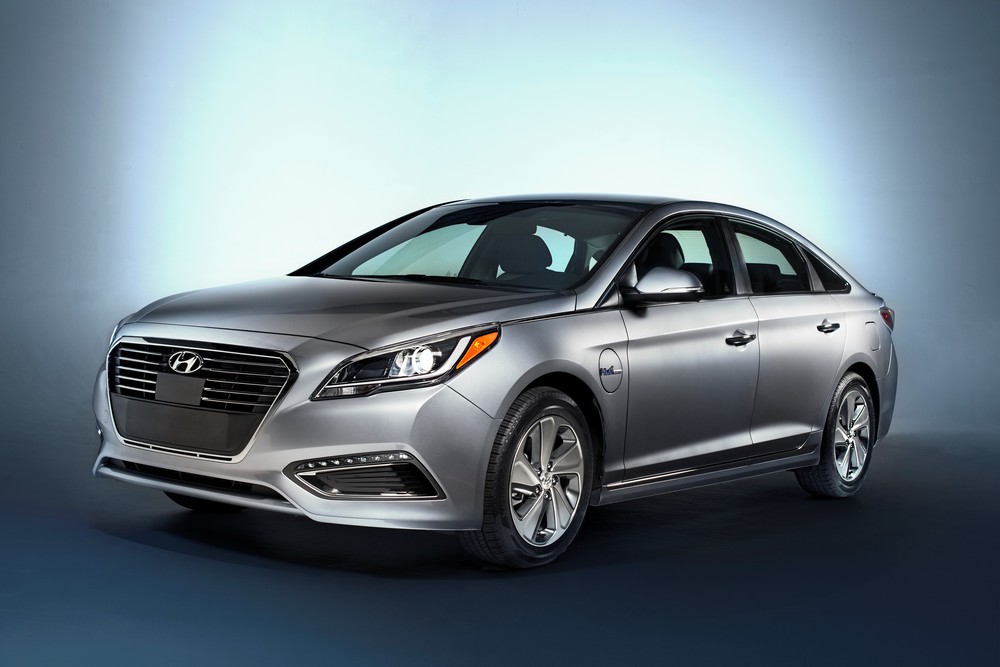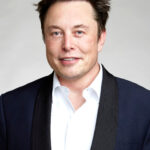This week Hyundai is holding a series of press/media events at which they’re unveiling the 2016 Hyundai Sonata Plug-in Hybrid. I’ll be in Los Angeles on Friday to see the car, and a few days after that will be posting my review. In the meantime let’s go over the press releases and specifications just released (you’ll see links below to pictures and documents).
As you might expect from the name, the Sonata Plug-in Hybrid is the plug-in twin to the Sonata Hybrid. It has some advanced driver assist technologies, but going by the spec’s the drive train is less than exciting.
The 9.8 kiloWatt-hour battery pack gives a 20+ mile electric range. Hyundai says they expect it to deliver “up to 24 miles electric range” but clearly they’ve not certified anything with the EPA as yet. This electric range puts the Sonata Plug-in Hybrid in league with the Ford C-MAX and Fusion Energi’s, and a couple other 20 mile range PHEV’s. While 20ish miles range is more useful than (cough cough) the 12 mile range of the Prius Plug-in Hybrid, it’s known the average American drives 40 miles per day on average and therefore the average Sonata Plug-in Hybrid driver will expect to hit the gasoline pretty much every day.
If you’re like me and want to avoid gasoline at all costs, this is a negative.
The electric motor is rated for 50 kiloWatts, which Hyundai is quick to point out is 32% more powerful than the motor on the Sonata Hybrid. However, 50 kiloWatts isn’t enough power for higher speed driving meaning the Sonata Plug-in Hybrid will probably be hitting the gasoline at highway speeds.
It should be a peppy car because the 2.0 liter gas engine is rated for 154 horsepower and 140 lb. ft. of torque and the total system output is 202 horsepower at 6,000 rpm.
The result is an expected 93 MPGe combined highway/city fuel economy. In charge-sustaining mode they expect it to deliver 40 MPG. Like the range figures given above, the use of the word “expect” means these numbers haven’t been certified by the EPA yet.
There’s a smart phone app allowing Sonata PHEV owners to “manage and monitor” their car. This includes fetching real time data, remotely unlocking/locking the car, and starting it up.
Advanced safety and driver assist features include Electronic Stability Control, Vehicle Stability Management, Traction Control, ABS and a Tire Pressure Monitoring System with individual tire pressure display. It has a rearview camera as a standard feature.
A Blind Spot Detection System alerts drivers of an approaching vehicle in the next lane if the turn signal is activated. It helps drivers when changing lanes to avoid collisions with other drivers who might also be changing lanes. That is, assuming the other driver is conscientious enough to use their turn signals and maybe haven’t simply left them turned on.
The Lane Change Assist system activates when your turn signal is activated, determines the closing speed of surrounding vehicles and sounds an alarm if other vehicles presents a danger.
The Lane Departure Warning System uses a forward-facing camera to recognize lane markers, and if it’s detected that the driver has wandered from their lane a warning signal is issued.
The Rear Cross-traffic Alert (RCTA) scans the areas to each side of the vehicle when drivers are backing out of parking spaces. If it detects approaching vehicles an alert is issued.
And if you take all this together, it’s clear Hyundai is working towards some form of autonomous driving cars. These features are implemented on top of technology that would be used to create fully autonomous cars.
- The USA should delete Musk from power, Instead of deleting whole agencies as he demands - February 14, 2025
- Elon Musk, fiduciary duties, his six companies PLUS his political activities - February 10, 2025
- Is there enough Grid Capacity for Hydrogen Fuel Cell or Battery Electric cars? - April 23, 2023
- Is Tesla finagling to grab federal NEVI dollars for Supercharger network? - November 15, 2022
- Tesla announces the North American Charging Standard charging connector - November 11, 2022
- Lightning Motorcycles adopts Silicon battery, 5 minute charge time gives 135 miles range - November 9, 2022
- Tesla Autopilot under US Dept of Transportation scrutiny - June 13, 2022
- Spectacular CNG bus fire misrepresented as EV bus fire - April 21, 2022
- Moldova, Ukraine, Georgia, Russia, and the European Energy Crisis - December 21, 2021
- Li-Bridge leading the USA across lithium battery chasm - October 29, 2021














